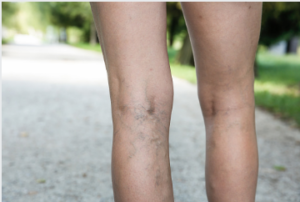Varicose vein removal is a procedure that can help relieve the pain, itching, swelling and other symptoms associated with varicose veins. It also improves the appearance of your legs.
There are several minimally invasive Adelaide varicose vein removal options, including sclerotherapy, thermal ablation and endoscopic vein surgery. These are all effective and very safe.
Sclerotherapy
 Sclerotherapy is a standard and safe varicose vein removal procedure. It consists of injecting a solution into the affected vein, causing it to scar and eventually disappear. This procedure is done in the doctor’s office and does not require anesthesia.
Sclerotherapy is a standard and safe varicose vein removal procedure. It consists of injecting a solution into the affected vein, causing it to scar and eventually disappear. This procedure is done in the doctor’s office and does not require anesthesia.
Your doctor will discuss your cosmetic goals with you, and they will look at the visible veins in your legs to assess whether you are eligible for this treatment. You will also be asked to describe any other medical conditions you may have that can interfere with the effectiveness of sclerotherapy.
If you are not yet a candidate for sclerotherapy, your doctor will recommend other vein removal options. In many cases, lifestyle changes and compression stockings can reduce the appearance of varicose and spider veins.
The doctor will also evaluate you for underlying conditions, such as pregnancy and blood clotting problems, that can make sclerotherapy less effective. If you are pregnant or have had a clot in the past, it will be essential to wait until after you have given birth before your varicose veins have healed enough to allow you to undergo this treatment.
Once approved for sclerotherapy, your vein specialist will inject a solution into the affected vein. The sclerosant breaks down the inner layer of the vein wall, forcing blood to change its route. It can take up to two treatments spaced 4 to 6 weeks apart to close off your problem veins fully.
Your vein specialist will then perform ultrasound imaging to ensure the injected solution targets the vein you want to treat. Then they inject the sclerosant into your damaged vein with a small needle.
The solution causes the vein scar, forcing blood to reroute through nearby healthy veins. This results in your veins shrinking and fading, leaving a more even skin tone. You can expect improvement within a few weeks after the first treatment session.
Endoscopic Vein Surgery
Adelaide varicose vein removal is a procedure to treat varicose veins that appear on the skin. It is a minimally invasive surgical treatment. It usually involves no incisions and is performed under local anesthesia.
The most common varicose veins are caused by a condition called venous reflux. It occurs when blood in your veins pushes back toward your heart instead of flowing directly. The valves in your veins weaken over time, allowing this to occur.
If you have this problem, you can help prevent it from worsening with lifestyle changes that decrease the pressure on your veins. Some of the most important are regular exercise, maintaining a healthy weight, avoiding standing or sitting for long periods, and wearing supportive clothing.
When you’re pregnant, your growing fetus puts extra pressure on the veins in your legs, which can cause varicose veins to develop. It is especially true in women with a higher risk of developing varicose veins than men.
Some people have a high risk of developing a blood clot in their veins, especially if they have had deep vein surgery in the past or have diabetes or high blood pressure. If you do lump your veins, it can be life-threatening.
A clot can travel to your liver, lungs, or other body parts, blocking blood flow to your heart. It can be a severe and potentially life-threatening complication of vein surgery.
Vein Stripping & Ligation
If you have severe varicose veins or venous insufficiency (blood pooling) caused by weakened valves in the leg veins, your doctor may recommend vein stripping & ligation. This procedure permanently removes the varicose veins, which can help reduce your condition’s recurrence risk.
This technique can be performed in a hospital or outpatient surgical centre under local, spinal, or general anesthesia. Your doctor will make a series of incisions along the leg from your groin to a point just below the knee.
Your surgeon will grasp and pull out the diseased GSV using a specialised stripping tool. In some cases, a more prominent vein might also be removed to prevent the recurrence of your symptoms and reduce the risk of blood clots in the legs.
To prepare for this varicose vein removal surgery, your doctor will perform a physical exam and order diagnostic tests such as duplex ultrasound imaging to locate the affected veins. It helps determine where the nonworking valves are located.
Your doctor may also give you a prescription for antibiotics to take before the surgery. They will likely also ask you to stop taking certain medications, including some steroid medications, before the procedure.
Before you undergo a vein stripping & ligation surgery, your doctor will talk to you about the risks and complications of this treatment. They will ensure you are a good candidate for the procedure and may suggest additional testing, such as duplex ultrasound or endovenous thermal ablation.
Your doctor will also need to know if you have any health problems, such as kidney disease or high blood pressure, or have had surgery or a significant injury. They may need a physical examination, including a blood test and X-rays of the affected leg.
